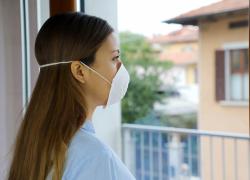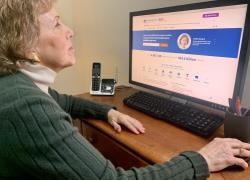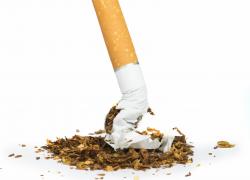Navigating the College Application Process
(NewsUSA) - Between deciding where to apply, visiting campuses, and completing financial aid forms, October can feel like crunch time for college-bound students, with more than half ranking college applications as their most stressful academic experience.
- Between deciding where to apply, visiting campuses, and completing financial aid forms, October can feel like crunch time for college-bound students, with more than half ranking college applications as their most stressful academic experience.
“Families often tell us that while the college search process is exciting, it’s also overwhelming. However, with the right mindset and strategy, it becomes easier, and you can enjoy it,” said Marcelle Hicks, dean of admissions and financial aid at New York Institute of Technology.
Whether you’re a high school senior or transferring from another university, Hicks shares these tips for navigating the college application process.
Plan and Build Your List
List your most important criteria and research which colleges and universities check those boxes. This can be as simple as choosing a location and exploring which institutions offer your anticipated academic major. Remember, your interests could change, so explore universities with additional majors to consider. Similarly, students undecided on a major should seek universities with a wide array of programs. Other considerations include affordability, preference for large lecture halls or intimate settings, campus activities, and whether the university’s values align with yours. Your plan may change along the way, and that’s okay.
Visit and Connect
This is the most exciting step! Campuses come to life, and you can envision what it’s like going to class or getting pizza in the dining hall. Today, there are more options than ever to connect with universities, which include both in-person and virtual options. At New York Tech, we offer campus tours, information sessions, and one-on-one appointments to help students make the most of their time with us. These interactions show your demonstrated interest in schools, so do your research and come prepared with questions.
Understand Application Requirements
Universities have different requirements and deadlines, so be sure to consult with admissions officers and review websites. While some institutions accept the Common App, allowing students to apply to multiple universities through one platform, others have separate applications. Plan to submit transcripts, recommendation letters, and personal statements; test scores and other materials also vary. Many universities, including ours, offer test-optional admissions, meaning you can choose not to submit SAT or ACT scores; however, strong scores could boost scholarship chances. While AI is useful for brainstorming, your essay should tell your story in your own words. Follow these essay prompts and take time to plan, edit, and review before submitting.
Enjoy the Journey!
Throughout the process, you’re in the driver’s seat. Attending college is a major step toward greater independence, allowing you to explore potential career paths and gain opportunities that are building blocks to your future. Don’t let the application process stop you from enjoying all that college has to offer.
Hicks is one of many New York Tech experts tackling real-world challenges. Visit nyit.edu to learn more.



 - Cybercriminals send
- Cybercriminals send 
 - Whether for work, fun, or both, most people spend long periods sitting or slouching in front of a screen. Excessive sitting can lead to poor posture, which in turn increases the risk of a range of problems including muscle pain, joint pain, headaches, fatigue, altered digestion and respiration, and even nerve tissue compression, according to
- Whether for work, fun, or both, most people spend long periods sitting or slouching in front of a screen. Excessive sitting can lead to poor posture, which in turn increases the risk of a range of problems including muscle pain, joint pain, headaches, fatigue, altered digestion and respiration, and even nerve tissue compression, according to 
 - Counting steps as a measure of exercise is misleading, and not a useful indicator of daily exercise goals, according to exercise physiologist
- Counting steps as a measure of exercise is misleading, and not a useful indicator of daily exercise goals, according to exercise physiologist 
 - Exercising in the warmer weather is a welcome respite from winter, but summer workouts bring their own challenges, including dehydration.
- Exercising in the warmer weather is a welcome respite from winter, but summer workouts bring their own challenges, including dehydration.
 - Recent news has raised concerns about the safety of items that may be in your kitchen, including plastic utensils and nonstick cookware (commonly made with Teflon).
- Recent news has raised concerns about the safety of items that may be in your kitchen, including plastic utensils and nonstick cookware (commonly made with Teflon).
 - Most Americans spend hours each day scrolling through their phones, but an expert at
- Most Americans spend hours each day scrolling through their phones, but an expert at 




